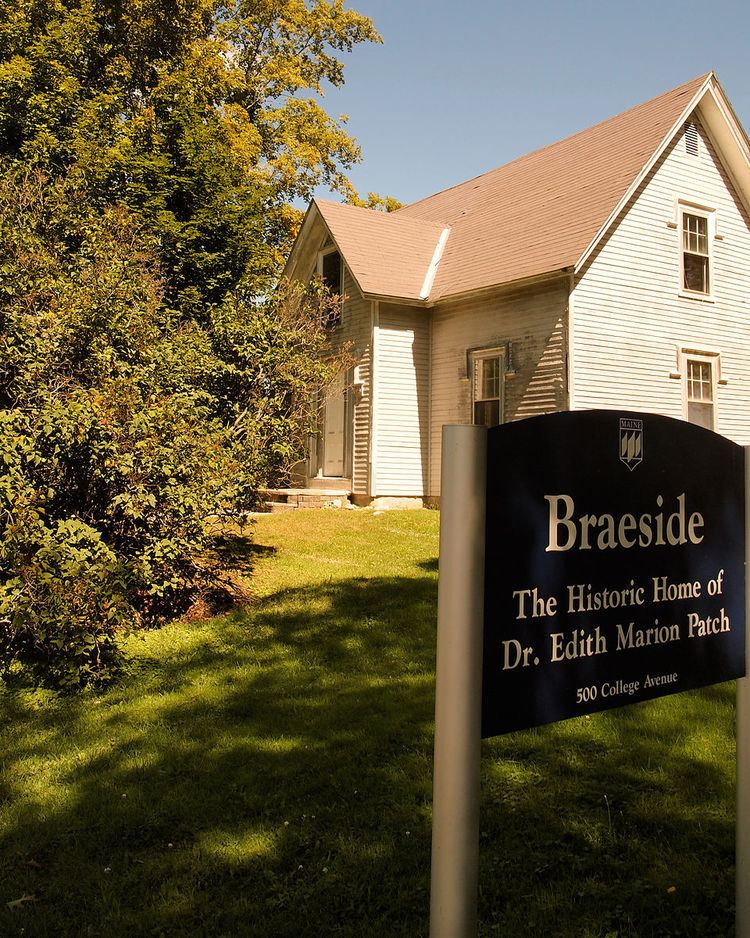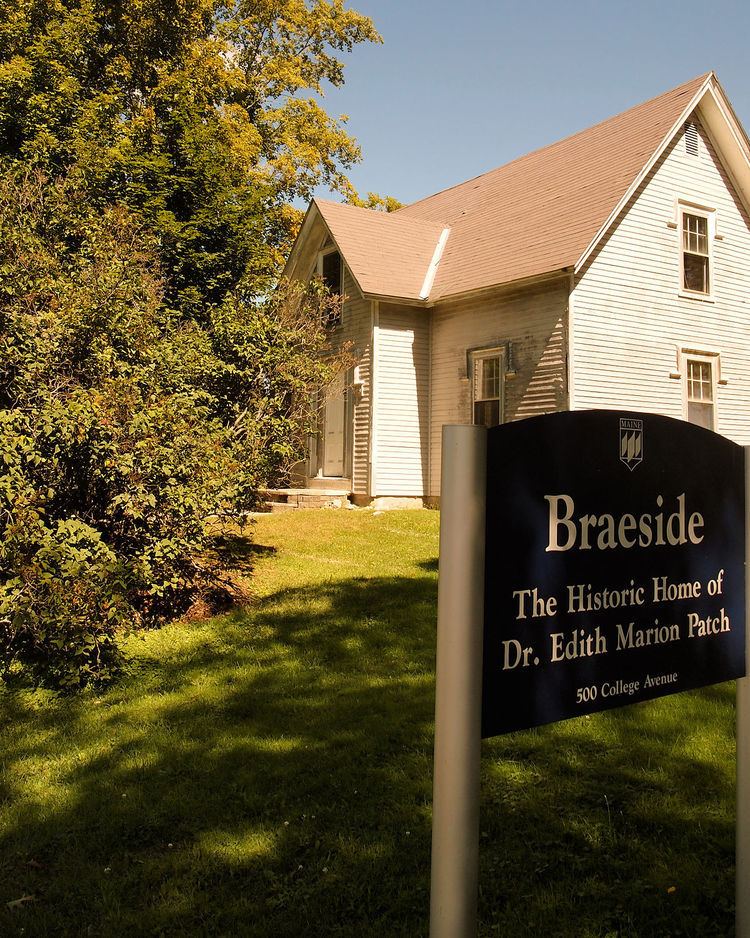Name Edith Patch Role Writer | ||
 | ||
Died 1954, Orono, Maine, United States Books Dame Bug and Her Babies, Bird Stories, A Little Gateway to Science - Hexapod Stories | ||
Edith Marion Patch (1876–1954) was an American entomologist and writer. Born in Worcester, Massachusetts, she received a degree from the University of Minnesota in 1901 and originally embarked on a career as an English teacher before receiving the opportunity to organize the entomology department at the University of Maine. She became the head of the entomology department in 1904, despite misgivings from several male colleagues about having a female department head, and she remained in this post until her 1937 retirement.Edith Patch is recognized as the first truly successful professional woman entomologist in the United States.
Contents

Patch subsequently earned her master's degree from the university in 1910 and later received a Ph.D. degree from Cornell University in Ithaca, New York in 1911. During her career, she was recognized as an expert in the study of aphids and published Food Plant Catalogue of the Aphids in 1938. She was elected president of the American Nature Study Society and in 1930 became the first female president of the Entomological Society of America. Patch's residence in Old Town, Maine, was added to the National Register of Historic Places in 2001.

Early life
Edith Marion Patch was the youngest of six children and was born in Worcester, Massachusetts in 1876. Her interest in natural history became evident at an early age and she used to ramble near her home, studying the animals, flowers and plants she saw there. The family moved to Minneapolis, Minnesota, when she was eight and then out into the countryside again two years later, when she was able to resume her interests in natural history. She was sufficiently knowledgeable while still at school to write an essay on the monarch butterfly which won her a prize in a competition. She invested her $25 reward in a copy of John Henry Comstock's "Manual for the Study of Insects" with illustrations by Anna Botsford Comstock. After graduating from Minneapolis's South High School in 1896, Patch went to the University of Minnesota, graduating with a BSc in 1901. At first she was unable to find suitable employment as an entomologist and spent two years teaching English at a high school, but she got her chance when Dr. Charles D. Woods offered her an unpaid post. The job was at the University of Maine in the Maine Agricultural Experiment Station to start up an entomology department. Woods decision to appoint based on merit and not gender was vindicated when she was granted a full-time job the following year.
Career
Patch was always concerned with the practical applications of entomology and wrote bulletins about the pests of agricultural and horticultural crops of Maine and forest trees. Her specialism was the aphid family with their complex life histories, their capacity to transmit viruses and their alternating host plants. She may have been influenced in this choice by the fact that she had worked with Professor Oestlund, an expert on aphids, in Minnesota before going to University. She remained at the University of Maine throughout her career, obtaining her master's degree in 1911 and her doctorate from Cornell University a year later. While at Cornell, she became friends with the Comstock family. She published about eighty scientific papers on aphids, their identification, their biology and the role they played in the environment. She made the important discovery that the eggs of the melon aphid overwintered on a weed, (Sedum purpureum), and that removing this weed from the vicinity reduced infestation of crops the following year. In 1938, she published an important book, the "Food Plant Catalogue of the Aphids", which listed her discoveries on the host plants used by different species of aphids.
She also published articles in the "Maine Agricultural Experiment Station Bulletin" and wrote others for the general public in horticultural magazines and the Atlantic Monthly Magazine, the Maine naturalist and the Scientific Monthly Magazine. She realised how useful beneficial insects could be in controlling pests and disapproved of the indiscriminate application of pesticides. In this, her ideas pre-dated Rachel Carson and her "Silent Spring" by forty years. Patch made an extensive collection of Aphididae which is maintained as part of the Canadian National Collection in Ottawa. It contained both winged and wingless forms of each species and has been widely used by researchers. She was considered a world authority on aphids and had two genera, five species and one sub-species named in her honour. She herself was the author of a number of newly described species.
Patch was elected president of the American Nature Study Society in 1930. She also became the first female president of the Entomological Society of America at a time when this male-dominated society admitted few women.
Writing career
After acquiring her PhD, Patch embarked on writing books and magazine articles on natural history for children, designed to stimulate their interest and enthusiasm for the natural world. They were published at first by the Pine Cone Publishing Company in Orono, which seems to have been her own enterprise. These were mostly stories for younger children, the first being "Dame Bug and her Babies", about the life of the solitary potter wasp Eumenes fraternus. Later, after her reputation as a natural history writer for children was established, she was taken on by the better known Macmillan Publishers. With them she produced the "Holiday Series", on the wildlife and plants found in various habitats, the "Neighbor Series", with information on wild animals in their natural settings, and the "Science Readers" for schools, covering scientific topics for children up to eighth grade.
Patch House
In 1913, Patch purchased an old farmhouse with fifty acres of land at Old Town, Maine and lived there for the rest of her life. She called the house "Braeside" but it later became known as "Patch House". It passed into the possession of the University of Maine after her death and was used for student accommodation. By the 1990s it was deemed to be in violation of various codes of safety and was destined for demolition, and an arrangement was made to allow it to be burned down as a training exercise for firefighters. In 1997, a few days before it was due to go up in flames, activists managed to get it added to Maine's list of most endangered properties and it was saved for posterity. In 2001 it was added to the National Register of Historic Places.
